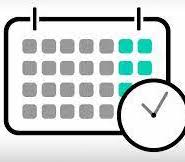Introduction to Digidates Public API
If you want to access data about important dates, anniversaries, and holidays, then the Digidates Public API could be just what you need. This API gives you access to a wide range of useful information about events from all over the world.
To get started with the Digidates API, you first need to sign up for an API key. You can do this by visiting https://digidates.de/en/ and following the instructions on the website. Once you have an API key, you can start making requests to the API using a variety of programming languages.
In this blog post, we’ll provide some example code in JavaScript that demonstrates how to connect to the Digidates API and retrieve information about upcoming events.
Connecting to the API
To start working with the Digidates API, you’ll need to make an HTTP request to the API endpoint. You can do this using the built-in fetch function in JavaScript. Here’s an example of how to connect to the API and retrieve some data:
const apiKey = 'your-api-key';
const apiUrl = `http://api.digidates.de/api/v1/?apikey=${apiKey}&command=get_events&type=holiday`;
fetch(apiUrl)
.then((response) => response.json())
.then((data) => console.log(data))
.catch((error) => console.error(error));
In this example, we’re using the fetch function to make a GET request to the Digidates API. We’re passing in our API key as a query parameter in the URL, along with the command parameter (which tells the API what we want to do) and the type parameter (which specifies the type of event we’re interested in).
When we receive a response from the API, we’re using the json method to parse the response into a JavaScript object. We’re then logging the data to the console.
Working with the API response
Once we’ve connected to the Digidates API and retrieved some data, we can start working with the response. The response from the API will be in JSON format, which makes it easy to parse and use.
Here’s an example of how to loop through the data returned by the API and display some information about each event:
const apiKey = 'your-api-key';
const apiUrl = `http://api.digidates.de/api/v1/?apikey=${apiKey}&command=get_events&type=holiday`;
fetch(apiUrl)
.then((response) => response.json())
.then((data) => {
data.events.forEach((event) => {
console.log(`${event.title} is on ${event.date}`);
});
})
.catch((error) => console.error(error));
In this example, we’re using the forEach method to loop through the events array in the response from the API. For each event, we’re logging the title and date to the console. You could easily modify this code to display the information on a web page instead.
Conclusion
In this blog post, we’ve provided some example code in JavaScript that demonstrates how to connect to the Digidates Public API and retrieve information about upcoming events. This is just the tip of the iceberg - the Digidates API provides a wealth of information that you can use to build all sorts of applications.
We hope this post has been helpful in getting you started with the Digidates API. If you have any questions or comments, please feel free to leave them below. Happy coding!
